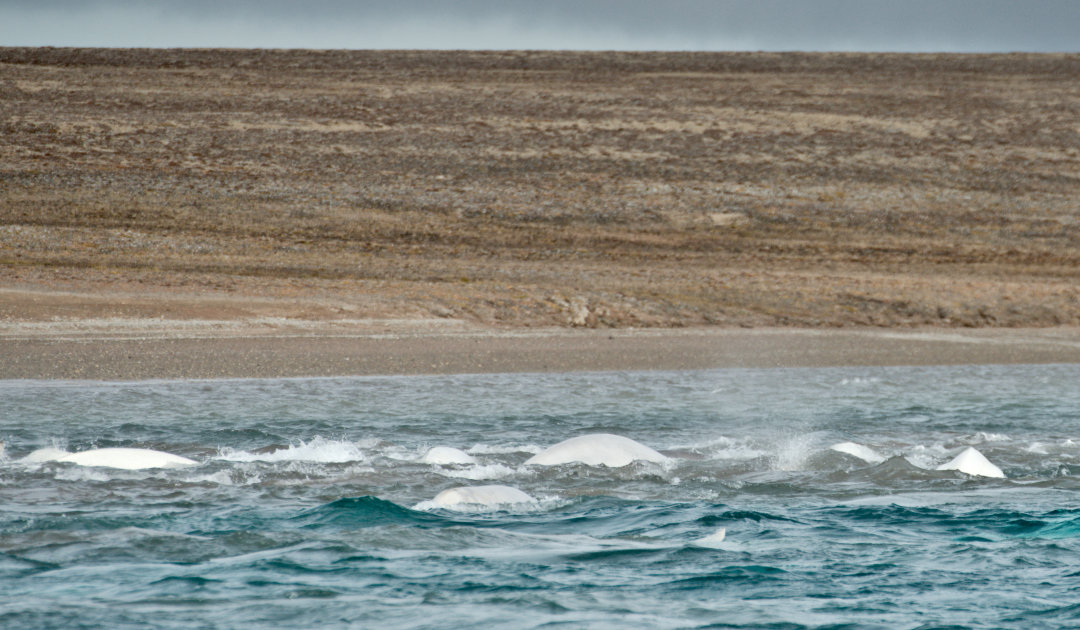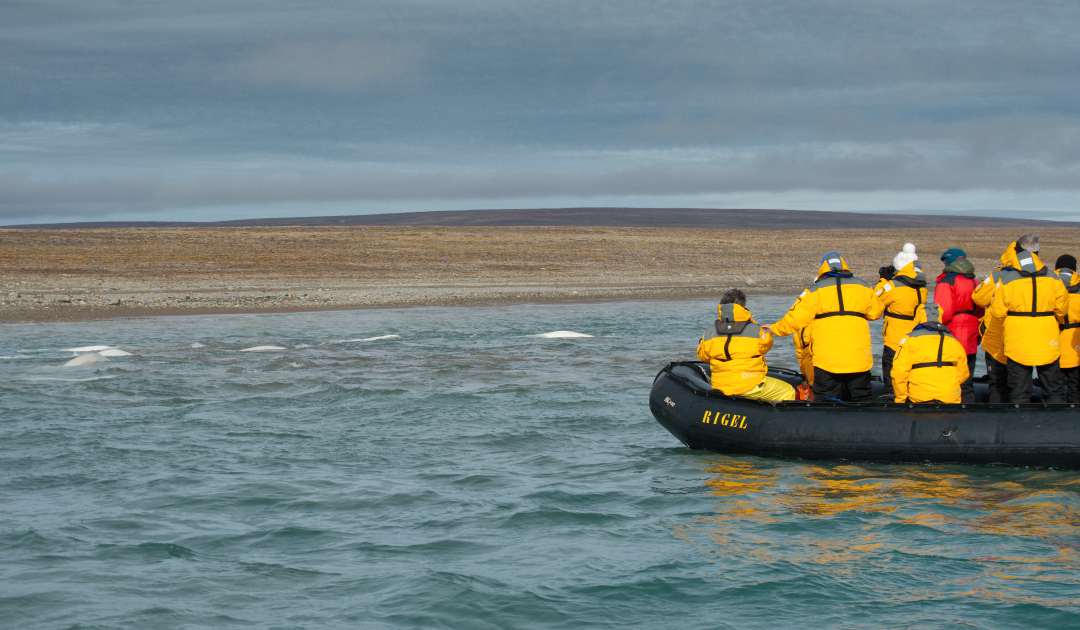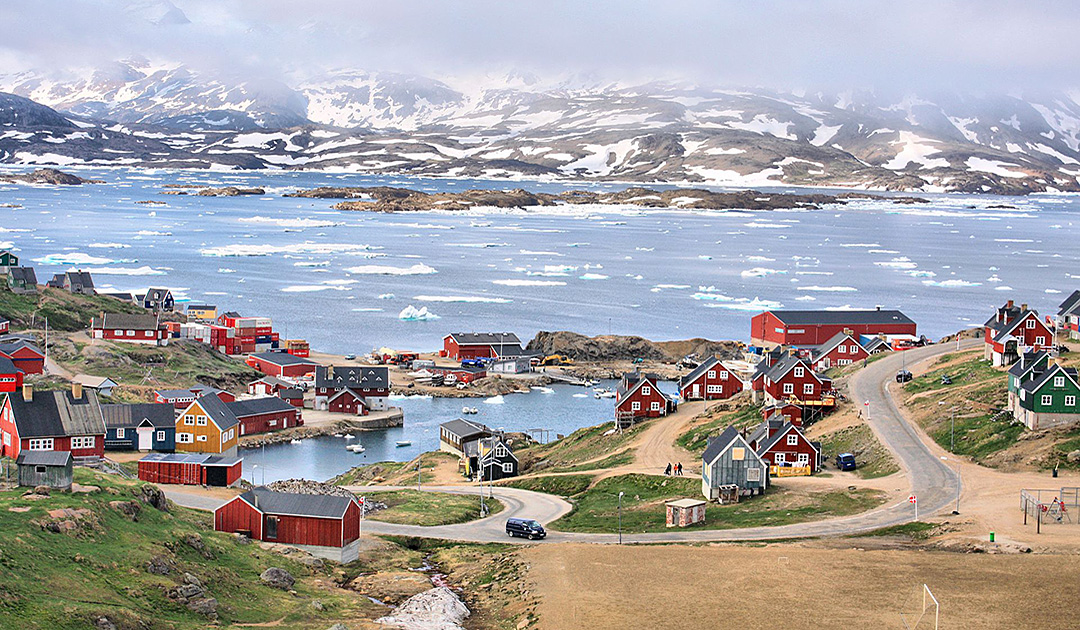
Whaling has a long tradition in the Arctic and is still practiced as a subsistence hunt in many regions. In this context, catches are mostly based on a quota system established by scientific data and, increasingly, also based on local knowledge of hunters. In other regions, however, hunting bans are in place, such as in the Arctic north of the Canadian province of Québec. Here, a regional Inuit organization now wants to have the hunting ban lifted using scientific methods.
Anguvigaq, also known as Nunavik Hunting, Fishing and Trapping organization HFTA, is campaigning for a ban on beluga whale hunting, which has been in place since 1986, to be lifted by authorities. To do this, they have been using scientific methods for two years to monitor the population of white whales in Mucalic Estuary in the northern Nunavik region, where they set up a large camp each summer as a base camp. “We are trying to prove to the Department of Fisheries and Oceans that it is not a unique resident beluga population and that it is subject to annual fluctuations,” Anguvigaq President James May tells Nunatsiaq News.


Anguvigaq representatives use the camp as a starting point for their counts of belugas, which usually swim close to shore and are thus easily visible. They also have permission to shoot three animals each for scientific purposes. This allows the hunters and experts to examine the animals for their nutritional status and also to take samples of various tissues to have them examined for degree of relationship, contaminants and other parameters. But at the same time, the organization wants to pass the traditional and, in their eyes, sustainable whaling back to the next generations. For this purpose, in addition to the usual hunters, scientists and camp members, there are also young people and Inuit elders. The latter are designed to introduce the young participants to traditional knowledge, language and cultural aspects. In this way, Angvigaq aims to pass on traditional knowledge and modern research methods for sustainable wildlife management to the next generation.

For James May and the Inuit organization represented in the 15 local communities in Nunavik, the 1986 decision by the federal authorities at the time was not based on a complete analysis of the situation. The hunting ban was enacted at the time with the intention of protecting the beluga population in the region from extinction. But there had been no consultation with the local population. For this could have drawn attention to the fact that the figures on which the decision was based are subject to large annual fluctuations on site. The data now collected over the two years seems to underscore that. But a longer data series still needs to be established to prove the theory. The responsible ministry has not yet taken a position on this. But the samples May and the aides collected have been submitted to the department for analysis.

But a look at Greenland’s neighbor shows that May and Anguvigaq are not at a loss. Indeed, a few weeks ago the Greenlandic government decided to allow beluga hunting for East Greenland and released a quota of 30 beluga whales. In doing so, it had gone against the recommendation of the research community, which had wanted to continue to protect the white whale there, also citing scientific data. “Whether in this or other areas, Inuit knowledge should be considered in wildlife management,” says James May in an interview with Nunatsiaq. “We’re trying to get Inuit and southern scientists to work together and consider that Inuit knowledge is one of the most valuable sources of science and knowledge in the North.”
Dr Michael Wenger, PolarJournal
More on the topic





